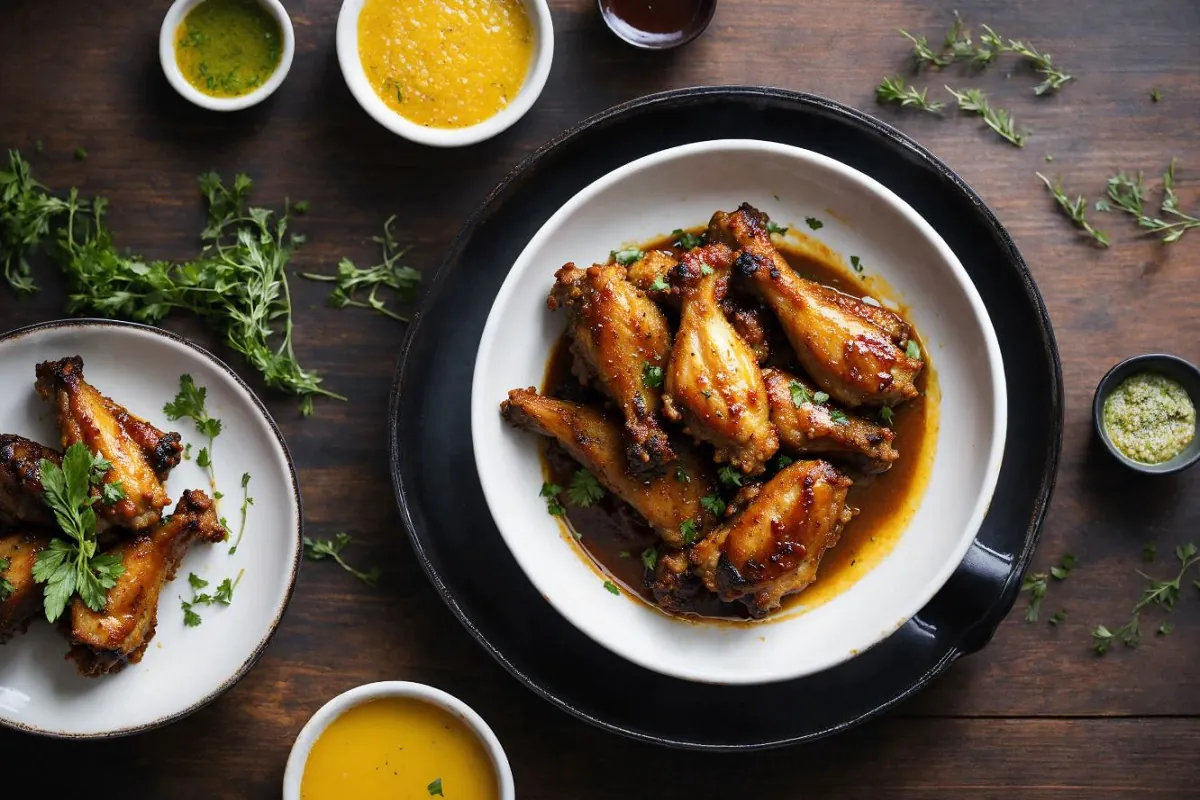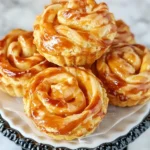Introduction to Pat Drying Chicken Wings for Crispiness
Mastering the art of how to Pat Dry Chicken Wings is essential for achieving that perfect crispiness we all crave. This comprehensive guide is your go-to resource for all methods related to Pat Dry Chicken Wings. From choosing the right wings for pat drying to the final cooking process, we cover every aspect of the Pat Dry Chicken Wings technique, ensuring you get that irresistible crunch every time.
As we dive deeper into the Pat Dry Chicken Wings method, we’ll explore various tips and tricks that make a significant difference. It’s not just about removing moisture; it’s about understanding the nuances that contribute to the texture and flavor of the wings. For more delicious wing recipes, check out our Honey Old Bay Wings recipe, perfect for your next cookout. We’ll discuss the importance of the drying surface, the role of ambient temperature, and how these factors influence the outcome of your Pat Dry Chicken Wings.
Moreover, we’ll look at common mistakes to avoid when pat drying. Whether it’s using the wrong type of towel or rushing the process, these small missteps can impact the quality of your Pat Dry Chicken Wings. By the end of this guide, you’ll not only be well-versed in the technique but also equipped with the knowledge to troubleshoot any issues that arise during your chicken wing preparation.
In summary, the Pat Dry Chicken Wings method is more than just a preparatory step; it’s a crucial component in achieving the ultimate wing experience. For additional tips on achieving the perfect crispy texture, explore The Chunky Chef’s guide on Epic Dry-Rubbed Baked Chicken Wings. Stay tuned as we continue to unfold the secrets to perfecting this technique, ensuring every batch of your chicken wings is nothing short of spectacular.
Selecting the Best Wings for Pat Drying
Before we even get to drying, let’s talk about the wings themselves. Not all wings are created equal! Fresh wings are generally your best bet, as they tend to have less moisture than frozen ones. When shopping, look for wings that are plump and have a fresh, not overly pungent, smell. Remember, the quality of your wings sets the stage for the final outcome.
Preparation Steps for Pat Dry Chicken Wings
Now, onto the prep work. Start by giving your wings a good rinse under cold water. This step washes away any residual blood or feathers. Next, if you’re up for it, trim off any excess skin or fat. This isn’t just about aesthetics; it helps in reducing the amount of grease and promotes even cooking.
Essential Pat Drying Techniques for Chicken Wings
Here’s where the magic begins. Pat drying is crucial because moisture is the enemy of crispiness. When you cook moist chicken wings, they steam rather than crisp up. So, grab a roll of paper towels and gently pat each wing until it’s as dry as you can get it. This simple action is your first step towards achieving that perfect, crispy skin.
Best Tools and Materials for Pat Drying Chicken Wings
While paper towels are the go-to for most, they’re not the only option. If you’re environmentally conscious, a clean kitchen towel does the trick. Just make sure whatever you’re using is absorbent enough to get rid of as much moisture as possible.
Seasoning Tips Post Pat Drying Chicken Wings
Once your wings are dry, it’s time to add some flavor. This is where you can get creative with your seasonings. Whether you’re a fan of classic dry rubs or prefer a marinade, ensure your wings are thoroughly coated. Remember, the drier the wings, the more the seasoning will stick, resulting in a flavor-packed bite.
Optimal Cooking Methods for Pat Dried Chicken Wings
With your wings prepped and seasoned, it’s time to cook them. Baking, grilling, and air frying are all fantastic methods that yield different textures and flavors. Baking is great for a healthier option, grilling gives you that smoky flavor, and air frying offers a quick and less oily route to crispiness.
How to Pat Dry Chicken Wings: Mastering the Art of Crispiness
Advanced Drying Techniques
Alright, wing enthusiasts, let’s level up our drying game. Beyond the basic pat down, there are a couple of tricks to ensure even drier wings, which, of course, means even crispier results. One popular method is using a light coating of baking powder. Yes, baking powder! It sounds odd, but it works wonders in drawing out moisture and giving the skin that crave-worthy crunch. Another technique is refrigerating the wings, uncovered, for a few hours before cooking. This process further dries out the skin, setting you up for success.
Troubleshooting Common Issues
But what if things don’t go as planned? Maybe your wings are still too wet, or the skin tears during drying. Don’t fret! If your wings are excessively moist, consider letting them sit in the fridge for a bit longer. As for tearing, be gentle during the patting process. It’s a pat, not a rub or a scrub. Gentle does it!
Pat Dry Chicken Wings FAQs
Let’s tackle some common queries that might pop up in your wing-making journey:
- Can I use a hairdryer to dry my chicken wings?
- While it might sound like a quick fix, it’s not recommended due to hygiene and uneven drying.
- How long should I refrigerate the wings for drying?
- A few hours to overnight, depending on how much time you have.
- Is it better to season before or after drying the wings?
- Always season after drying. This ensures the seasoning sticks better and doesn’t get washed away.
The Importance of Wing Size and Cut
Wing Size and Its Impact on Cooking
- Discuss how the size of the chicken wings affects cooking time and texture.
- Explain the difference between whole wings, drumettes, and wingettes, and how each part cooks differently.
- Offer tips on choosing the right size for different cooking methods.
Marinating vs. Dry Rubs: Flavoring Your Wings
Choosing the Right Flavor Profile
- Compare and contrast marinating and using dry rubs for flavoring wings.
- Provide insights on how long to marinate for optimal flavor infusion.
- Suggest a few popular marinade and dry rub recipes.
The Role of Cooking Temperature
Finding the Perfect Heat
- Elaborate on the importance of the right oven or grill temperature in achieving crispy skin.
- Discuss the pros and cons of high-heat vs. low-and-slow cooking methods.
- Offer tips for adjusting cooking times based on temperature variations.
Serving and Presentation Tips
Making Your Wings Irresistible
- Share ideas on presenting chicken wings in an appealing way.
- Suggest serving accompaniments like dips and side dishes.
- Offer tips on garnishing for visual appeal and added flavor.
Healthier Alternatives to Traditional Wing Recipes
Lighter Options for Wing Lovers
- Discuss healthier cooking methods like baking and air frying.
- Suggest alternative ingredients for lower-calorie options.
- Provide a couple of recipes for healthier chicken wings.
The Importance of Wing Size and Cut
Wing Size and Its Impact on Cooking
When it comes to cooking chicken wings, size does matter. Larger wings take longer to cook and can result in a different texture compared to smaller ones. The cut of the wing is also crucial. Whole wings, drumettes, and wingettes each offer a unique eating experience. Drumettes resemble small drumsticks and have more meat, making them a hearty choice. Wingettes, or flats, have less meat but are often prized for their crispy skin. When selecting wings, consider how the size and cut will affect your cooking method and the final outcome. For instance, smaller wingettes are ideal for quick, high-heat cooking methods like grilling or air frying.
Marinating vs. Dry Rubs: Flavoring Your Wings
Choosing the Right Flavor Profile
Marinating and dry rubbing are two popular methods for flavoring chicken wings, each bringing its own unique benefits. Marinades typically involve soaking the wings in a liquid mixture, which can infuse them with moisture and flavor. For a robust flavor, marinate your wings for at least an hour or, for deeper infusion, overnight. On the other hand, dry rubs, a blend of spices and herbs, offer a more intense flavor and a crispier skin. They’re perfect for those who love a textured, flavorful crust on their wings. Experiment with different marinades and rubs to find your perfect match. Classic options include spicy Buffalo marinade or a smoky BBQ rub.
The Role of Cooking Temperature
Finding the Perfect Heat
The cooking temperature plays a pivotal role in achieving the perfect chicken wing. High heat is great for a crispy exterior, but it must be monitored closely to prevent burning. Conversely, cooking wings at a lower temperature for a longer period can result in tender, well-cooked meat with less risk of charring. However, this method might not provide as much crispiness. It’s all about finding the right balance. If you’re using an oven, experimenting with temperatures between 375°F to 425°F can yield different textures and flavors. Remember, every oven is different, so it’s worth investing time to find the sweet spot for yours.
Serving and Presentation Tips
Making Your Wings Irresistible
First impressions count, and how you serve your chicken wings can make a big difference. Present them on a platter with a variety of dips, like blue cheese, ranch, or a spicy sauce, to add color and flavor. Accompany your wings with celery sticks, carrot sticks, or other fresh veggies for a refreshing crunch. Don’t forget the garnish – a sprinkle of fresh herbs or a squeeze of lemon can elevate the look and taste of your dish. Remember, the goal is to make your wings not just delicious but visually appealing too.
Healthier Alternatives to Traditional Wing Recipes
Lighter Options for Wing Lovers
For those looking for a healthier take on chicken wings, there are plenty of options. Baking or air frying wings instead of deep-frying can significantly reduce the fat content without compromising on flavor. You can also experiment with skinless wings or use gluten-free or low-carb coatings for dietary preferences. Try marinades and rubs with less sugar and salt for a healthier yet tasty alternative. Recipes like lemon-pepper wings or herb-marinated wings are great starts for healthier options that don’t skimp on flavor.
Conclusion and Final Thoughts
Pat drying might seem like a small step in the grand scheme of cooking chicken wings, but its impact is huge. By ensuring your wings are as dry as possible before cooking, you’re setting yourself up for the ultimate crispy outcome. Remember, great cooking is all about the details. So, next time you’re prepping wings, give them the TLC they deserve with a thorough pat dry. Your taste buds will thank you!



